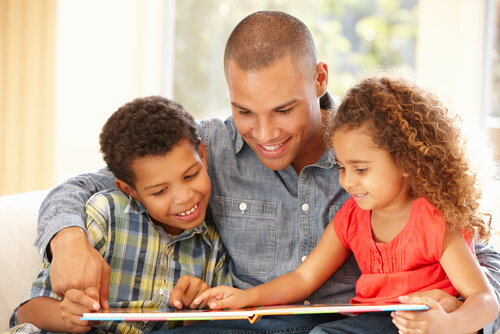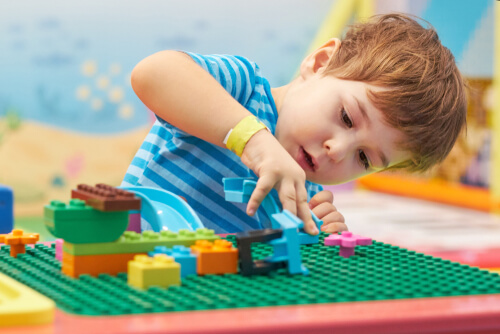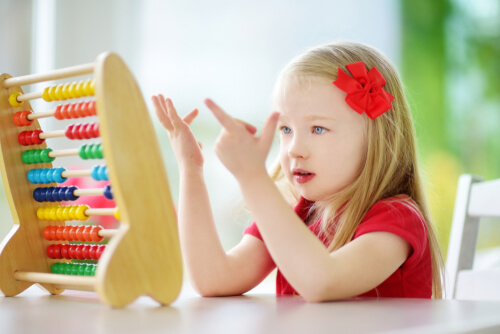Homeschooling Your Preschooler: A Curriculum Walkthrough
Feb 6, 2022 Whether you're home-schooling your preschooler by choice or out of necessity due to COVID regulations, shutdowns, or concerns, knowing what to include in your child's home curriculum can be confusing. You know they need to learn letters, numbers, how to write their name, etc. What steps should you take?
In This Article
Even more, how do you teach these things to a child? And what other activities for preschoolers should you include? The good news is that there are sites galore full of amazing developmentally appropriate activities homeschooling tips for your little one. I am here to walk you through what you should include and look for in preschool homeschool lesson plans for your little one!
Expand your child’s vocabulary with more than 1,500 activities. Try Speech Blubs today!
The more you practice, the more you learn! Try the Speech Blubs app for fun and engaging language learning with your little one.
Boost Your Child’s Speech Development!
Improve language & communication skills with fun learning!

Developmental Areas for Preschool Homeschool Curriculum
The first thing you need to know is that there are six main developmental areas to include in your preschool homeschool curriculum. They are: Social-Emotional, Physical, Cognitive, Language, Literacy, and Mathematics.
Your goal each week should be to incorporate each of these activity areas at least twice. If that seems daunting, don’t worry; most activities cover multiple areas.
For example, you include the book Giraffes Can’t Dance by Giles Andreae into your lesson for the day. By reading with your child, you are covering literacy. When you extend that reading into talking about how Gerald felt at the beginning versus the end of the story, you have incorporated social-emotional and language development. A further extension would be having your child create their unique dance to a favorite song; now you’ve added the physical area! See? You can do this!
Social-Emotional
Social-emotional development is precisely what it sounds like; it is the development of your child’s social skills and emotional expressions and capacity. Reading books, especially those that include social stories, is an excellent activity. Also, before, during, and after reading, ask your child various open-ended questions about how the characters feel, why, and what they could do differently? Puppet play is another way to teach your child social skills. You can act out situations that need to be solved.

This may sound counter-intuitive, but when you are playing with your child, especially if they are an only child, do things that will upset them, such as “accidentally” knocking down their tower, or picking up a toy that they were using. This allows your child to feel strong emotions that you can problem-solve together. Any and all opportunities you can provide your child to talk about their feelings, take them! Validate their feelings and let them know that, yes, even mom cries and is sad too at times!
Physical
Physical development may be the easiest for parents to come up with ideas because it encompasses familiar things such as dance, sports, and active play. Kicking a soccer ball for 20 minutes in the backyard works to develop your child’s gross motor skills. Taking a swim class not only provides them with cognitive skills they need to save their own lives, but is a full body workout.
Other fantastic gross motor activities include playing catch, dancing, yoga, hopscotch, and a backyard obstacle course. A preschool child needs a minimum of two hours of active physical play every day.
Fine motor development includes developing your child’s hands for writing, tying their shoes, scissors, and hand-eye coordination. It’s really important to understand that before your child can write, they must have enough muscle development. Fun ways to strengthen your child’s hand muscles include playing with tweezers, eye droppers, or clothespins. Playdough is one of the best toys out there for writing development. Hands-on activities are key.
Cognitive
Cognitive development includes your child’s memory, problem-solving, and analytical skills. Puzzles, building with Legos, Tinker Toys, blocks, pretty much anything they can create and build with will be beneficial to developing their cognitive abilities. Resist the urge to solve the problem for them; instead, talk them through the steps they need to take. For example, “Your tower keeps falling down, why do you think that is happening? What could you change about your tower that might help?”

Seek n Find puzzle books, memory card games, and sequencing games are wonderful tools! You don’t need fancy cards to play memory, take out a regular deck of playing cards, and pull out a dozen matching pairs! Then ask your child to draw a picture of something they saw earlier in the day or week or present them with a problem you are having and ask their advice!
Language
Language includes when your child develops speech, vocabulary, and the ability to participate in conversations or class discussions – babies begin developing language before they are born. They recognize their mother’s voice inside the womb. Young infants notice a difference between their native language and a foreign one.
The best way to develop your child’s vocabulary is to talk to them and let them talk! Avoid correcting grammar mistakes on the spot; instead, if they make a mistake, simply repeat the proper way back to them. If they say, “Me want to go shopping!”, you would say, “I want to go shopping too!”
Engage in dramatic play with your child, and pretend to go to the doctor or the grocery store. Use the language and phrases people would use in your pretend locale and introduce new words with which they are unfamiliar. Playing rhyming games (made-up words are ok!), I Spy, singing, and fingerplays all promote language skills in preschoolers!
Literacy
Please be aware that literacy is different than language, although they can often be combined in the same activity. More specifically, literacy refers to written language, so you should focus on your child’s understanding of letter shapes, sounds, and words when written. So, get yourself a letter set, whether magnetic, plastic, or foam.
The only stipulation is that the letters can be taken out of order. Rote singing of the ABC’s does not mean your child has learned their letters. When teaching a child literacy, start with their name. Have them hunt for familiar letters around the house or through books. Once they have mastered their name and the letters in their name, move on to other words that start with those same letters, as well as letters in siblings’ names or mom and dad. Familiarity is your best friend, especially if you have a child who struggles with letters.
Other fantastic options include Zingo! (a tremendous preschool game), ABC match sets, adding plastic letters to a sandbox, or letter shapes to play with playdough. Any way you can think of adding letters to the mix, go for it! To help them work on writing their name in a non-threatening way, have your child “sign-in” for school daily. You can use a dry erase board, a notebook, or just a piece of paper! Take note of what letters need work, and incorporate games to work on those forms. Avoid pointing out mistakes on the spot.

Mathematics
Numbers are essential, and just like letters, they can be added to various games and activities. Engaging your child in games that include a cash register and play money, dice, cards, and dominoes are excellent options. Even more, you should try to avoid flashcards, and rote counting as these will promote memorization skills, but not necessarily grounded knowledge. One of my favorite ways to teach children about number concepts is through snack! Goldfish, M&Ms, fruit slices, berries, and graham cracker segments all work!
Card games like War and Go Fish work on less and more, and numeral recognition. Modified Bingo (young children should focus on 1-20), creating graphs and charts, pegboards, and anything that includes shapes and colors will help your child develop mathematical skills.
Conclusion: Kids Learn Best through Play
The key aspect of a preschool homeschool curriculum is that your child needs to be engaged in hands-on-play to learn. Worksheets, flashcards, and rote counting will not help your child learn those things that give a foundation in knowledge. It will only give them impressive memorization skills. For children to fully comprehend concepts, they must be doing. As the famous developmental psychologist, Jean Piaget said, “Play is a child’s work.”
